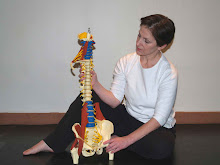I am a dance teacher and teach 23 hours a week. I have plantar fasciitis and can't seem to get rid of it. I've been stretching, icing, rolling my feet on tennis balls, wearing tennis shoes in all dance classes, wear insoles recommended to me by my chiropractor, gotten my feet adjusted and put electric stim through them, and taped my feet daily. I'm still in pain. This began in Nov. I was just wondering if you had any other ideas. I appreciate any advice you can give! Thank you! Kelly
You are certainly doing everything right, Kelly. Following a textbook rehab process for plantar fasciitis.

For those who don't know what plantar fasciitis is – it is an inflammation of the plantar fascia that is on the bottom of your foot. Fascia is a sheet or band of connective tissue that surrounds muscles and binds cells together. In some areas it is thin, like the fascia under your skin, and other areas quite thick, like on the ball of your foot.
Tom Myers wrote a wonderful book called Anatomy Trains, which looks at the myofascial meridians of the body. He proposes there are a series of myofascial lines of that travel through the body. For example, the superficial back line begins with the plantar fascia at the foot, goes up the back of the leg, continues up the muscles of the spine and ends over the top of your head at the eye sockets. Tension in any area along this line will influence the whole.
I know you are already rolling on a ball to help release the plantar fascia. I would tell you to do that as well! Let's see if you can find other areas that may be influencing the plantar fascia. You didn't mention if you had plantar fasciitis on one or both feet. When you have it only on one foot I always take a very careful look at the pelvic/torso shifts, and for any potential leg length differences. If it is on both feet, then pick the side that seems to be a little worse.
Before you roll the ball under your foot, try sitting on the floor and placing it underneath the thigh. Press the hamstring gently into the ball to encourage release. When you are in a tight area, slowly, slowly flex your foot. Very slowly - take 4 very slow counts to flex it. Do that a few more times under your hamstring, before doing the same thing for the back of the calf. Place the ball under the calf to massage it, but then also taking the time to do very, very slow flexing of the foot while the ball is still under the calf.
Now stand up and see how the foot feels. Is there any less pull on the bottom of the foot? Hopefully so!
Now you want to stand with your back to the wall and place the pinkie ball along the same side of the spine of the leg you were just working on. One spot might be right along the spine somewhere between the shoulder blades. You are leaning on the ball with your feet securely placed about a foot away from the wall, or whatever distance feels comfortable. Now with the ball staying in one spot along your spine, gently and slowly, very slowly drop your head towards your chest stretching the muscles along the side of the spine.
You can repeat that a few times at other spots along that same side of the spine.
Now recheck how your feet feel. Do you feel any less strain at the feet? This is a good exploration for dancers even without plantar fasciitis. It always astonishes me the detailed relationships between body areas. You just explored releasing tension along the superficial back line of fascia – without ever touching the plantar fascia itself – and yet – the plantar fascia most likely has been helped.
If this made a difference to how you feel in standing and walking, Kelly – it might be useful to find a massage therapist who specializes in myofascial massage. In addition, I would encourage you to continue exploring and releasing any tension you might find above the level of the foot. This may mean that you need to make some changes in your movement dynamics like the speed of your walking.
If you find you can walk more easily and without as much strain by walking more slowly than you normally do – then you need to become aware of your speed and try to walk slowly and easily, allowing the foot to roll without pain, and the weight to transfer firmly yet smoothly from one foot to another.
Please let me know how you do with these suggestions – and I'm also always eager to read your comments if you care to leave them.
Warmest regards, and hope everyone has a wonderful week!
Deborah
"Education is the key to injury prevention"
